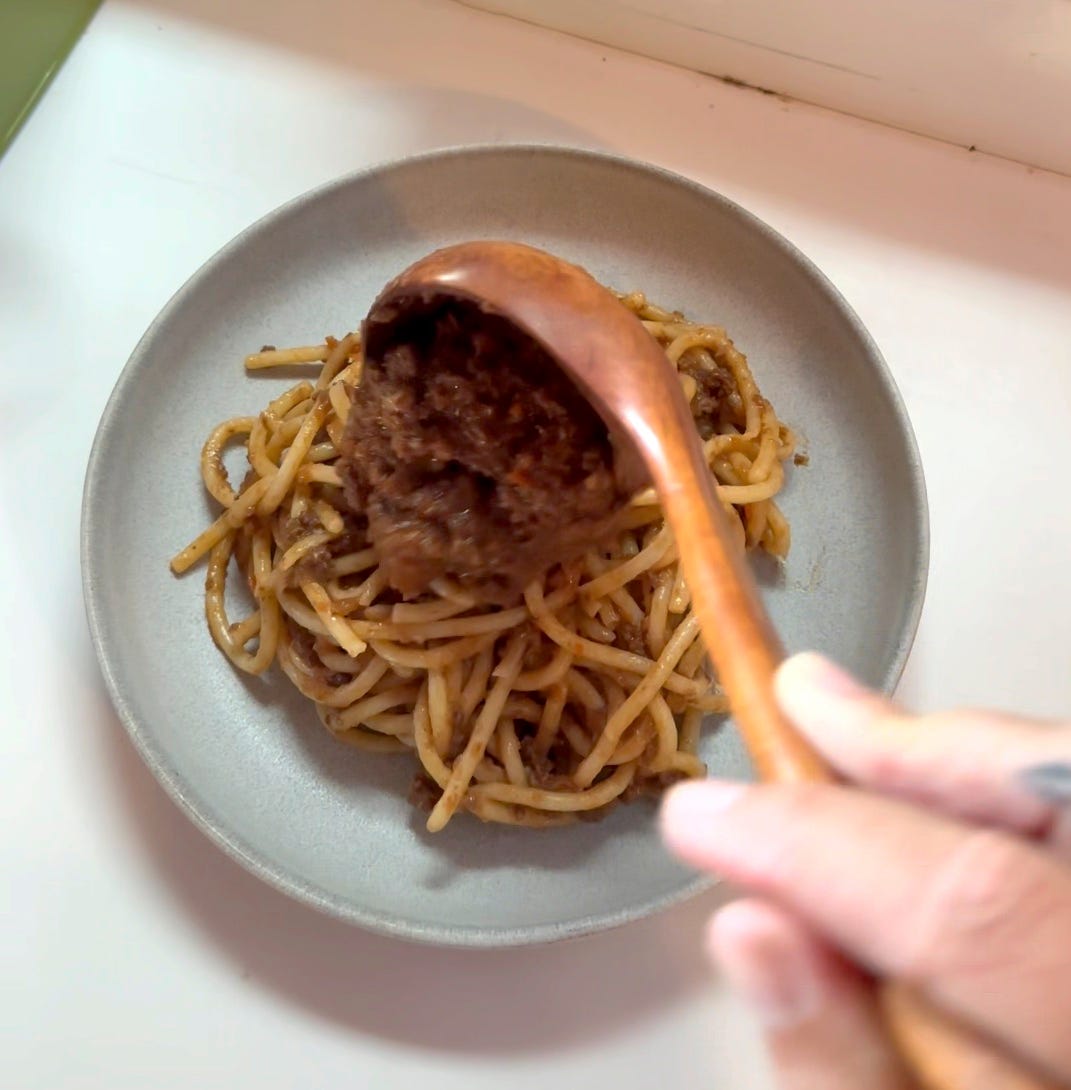Hey there hungry pals, and welcome back to Cool Beans. A quick reminder before we dive in this week: Eating sustainably doesn’t necessarily mean going vegan, because the data tells us that simply eating less meat can make a big dent in emissions, and because there are meats that actually make the world better. We’ve already chowed down on invasive fish like copi, but this time of year what may be the most sustainable red meat is about to be everywhere. We’re talking venison.
For some folks, October means peeping at leaves and sipping cozy pumpkin lattes, but for others it’s the start of big-game season. I know, I know: The idea of hunting fuzzy animals isn’t as appealing for everyone as fish ’n’ chips or a big bowl of beans, but hear me out. Eating venison has a ton of ecological benefits, and it’s probably more available than you’d think—even if you don’t want to hunt. Plus, if handled properly, it’s a tasty (not gamy) swap for beef in many cool-weather favorites like chili, and in the culmination of today’s newsletter: a rich, luxurious Bolognese sauce that would make any Nonna proud.
But first, we can talk through some of the questions I’m sure a lot of you have.
Aren’t deer a vital, beautiful part of the ecosystem?
Growing up in a family of hunters, I had conflicted emotions about eating venison because of a little movie called Bambi. Here in the three-dimensional world, though, there are plenty of reasons why hunting and eating wild deer is beneficial—even essential—for ecosystem health. Simply put, there are just too many deer, specifically whitetails. Humans have driven out natural predators like wolves and big cats, so there’s little left to keep herd sizes in check. Too many deer are dangerous to themselves and others: Animals wandering onto roads result in north of 1 million traffic accidents and about 200 deaths a year, and the majority of those incidents are from deer.
Those hooved masses are also major environmental pests. When they find something they like to eat, they won’t stop until the land is bare, which is bad news for both existing flora and attempts at reforestation. Plus, like all ruminants, deer poot and burp methane during digestion. It’s hard to get good data on a wild population, so the estimates on just how much vary a lot: On a pound-per-pound basis, some numbers say they produce more methane than cows, while others say the opposite is true. Either way, eating wild venison reduces methane full stop.
Doesn’t venison taste gamy?
The flavor of any meat is determined by what that animal eats, how old it is, and how active it is. Most supermarket beef comes from farmed cattle that have a pretty sedentary lifestyle and a diet that consists mainly of corn and grains like oats and barley. If that’s what you’re used to eating, your palate is likely accustomed to some pretty bland meat.
Wild deer eat a diverse diet of herbs, grass, plants, fruit, and acorns. Some of them may nibble on corn, but it’s definitely not their main meal. Venison, as a result, can taste more grassy and herbal, similar to grass-fed beef or bison if you’ve ever tried it. People sometimes call this flavor “gamy,” but that term actually refers to an off taste that has more to do with spoiled meat or the venison fat itself, which can have a very strong taste.
In a blind taste test run by Outdoor Life, venison crushed beef by an 8-to-2 margin. Nutritionally speaking, the other red meat also beats out the go-to: It’s lower in fat (though slightly higher in cholesterol) and has more protein, vitamins B6 and B12, and omega-3 fatty acids. Plus, it’s got more iron than any other red meat.
Can I even get it if I don’t want to hunt?
Ready to get your hunting license? Me neither, but I’ve got plenty of friends who have theirs, and chances are you might too. There are nearly 16 million hunters in the U.S., which means in a population of about 331 million people, around 1 in 20 has a license. You know 20 people, right? Ask around: The average whitetail yields more than 50 pounds of meat, and you’re probably two degrees separated from a hunter who has some to spare.
They might not want to give you the most coveted cuts, like the tenderloin or a ribeye-like muscle called the backstrap, and that’s OK. The larger, tougher pieces are often turned into ground meat, which is the easiest, most versatile place to start if you’re new to cooking venison. The ground meat is almost impossible to overcook and can be subbed wherever you’d reach for ground beef. Try it in chili, meatloaf, burgers, or in a silky meat sauce for pasta.
The recipe: Your hunt for a better Bolognese ends here
It’s always pasta season in my book, but the temps are dropping and I’ve got Bolognese on the brain. This meaty pasta sauce is usually a celebration of the cow (beef, butter, milk), but this venison version has a few sustainable swaps and tastes just as luxurious. I add a splash of red wine vinegar in with the wine to complement the rich flavor of the deer. But the real trick to any good Bolognese is time, which is great news here: It means the lean venison requires zero special attention because the slow braise keeps it moist. It’s not a quick recipe, but the majority of cook time is hands off. Plus, it lasts a week in the fridge and freezes beautifully so it’s well worth the wait.
Venison Bolognese
Serves 4





